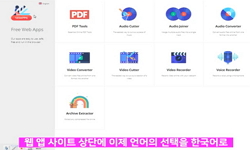Purpose : The purpose of this study was to develop a Jigsaw-based maker education model that enhances sharing, communication competence and digital literacy. Methods : The design and development research method was used. First, literature related to m...
http://chineseinput.net/에서 pinyin(병음)방식으로 중국어를 변환할 수 있습니다.
변환된 중국어를 복사하여 사용하시면 됩니다.
- 中文 을 입력하시려면 zhongwen을 입력하시고 space를누르시면됩니다.
- 北京 을 입력하시려면 beijing을 입력하시고 space를 누르시면 됩니다.

공유, 소통 역량 및 디지털 리터러시 강화를 위한 직소 방법 적용 메이커 수업 모형 개발 = Development of a Jigsaw-based Maker Educational Model for Enhancing Sharing, Communication Competence and Digital Literacy
한글로보기부가정보
다국어 초록 (Multilingual Abstract)
Purpose : The purpose of this study was to develop a Jigsaw-based maker education model that enhances sharing, communication competence and digital literacy.
Methods : The design and development research method was used. First, literature related to maker education, jigsaw classes, and digital literacy education were explored and analyzed. Second, based onthe results of the literature review, a draft model was developed, and the model was reviewed by five educational experts. Third, the model was modified based on the expert review results and the finalmodel was confirmed.
Results : The developed model guides jigsaw learning activities that are performed throughout the maker educational programs, including orientation, exploration, prototyping, creating materials for theprocess and outcomes, and sharing. The significance of this study is that it developed a new maker educational model and suggested sharing, communication and digital literacy activities that wereoverlooked in the existing model.
Conclusion : Unlike the models presented in previous studies, this maker class model emphasized sharing, communication activities, and digital literacy application activities. In addition, it is possible toexpect the improvement of learners’ sharing, communication competency, and digital literacy when conducting classes using the model.
동일학술지(권/호) 다른 논문
-
간호사의 환자안전문화인식과 조직의사소통이 환자안전관리활동에 미치는 영향
- 대한의료커뮤니케이션학회
- 권지선
- 2023
- KCI등재
-
- 대한의료커뮤니케이션학회
- 임효진
- 2023
- KCI등재
-
응급실 간호사의 폭력경험의 유형, 자아존중감 및 조직몰입의 관계
- 대한의료커뮤니케이션학회
- 김가현
- 2023
- KCI등재
-
한국 남성의 비만 유병현황과 예측요인(성인 남성을 대상으로): 국민건강영양조사 제7기 3차년도(2018)
- 대한의료커뮤니케이션학회
- 홍지연
- 2023
- KCI등재





 KCI
KCI KISS
KISS






